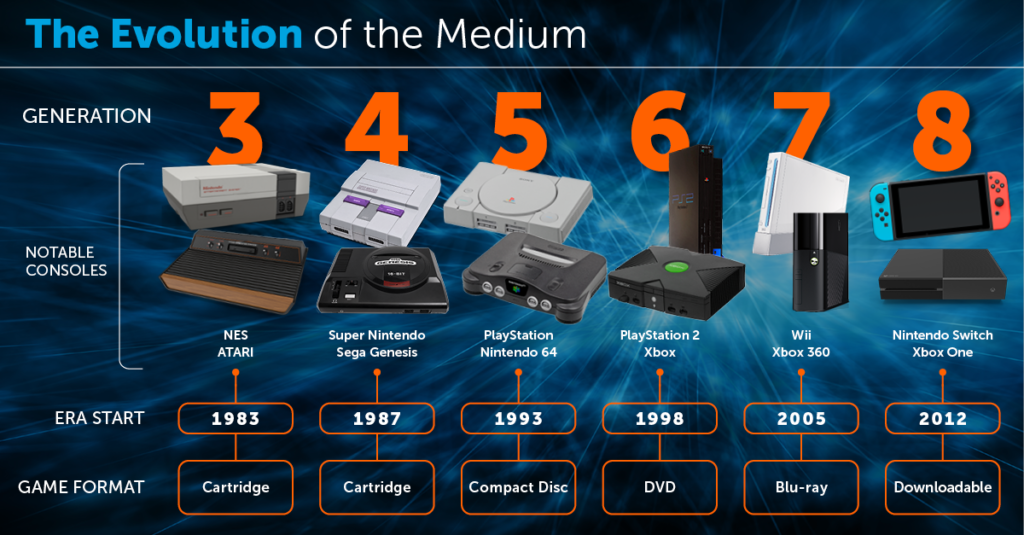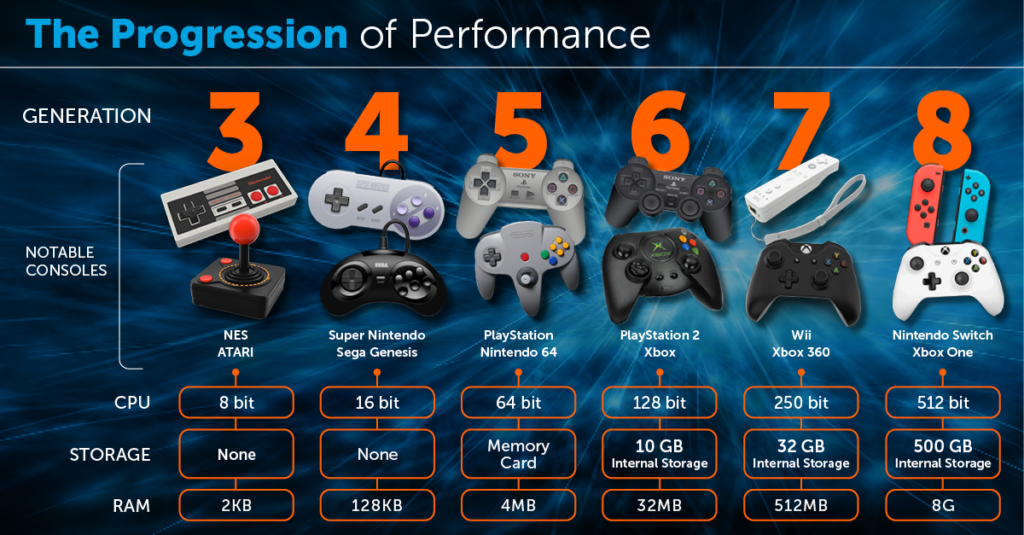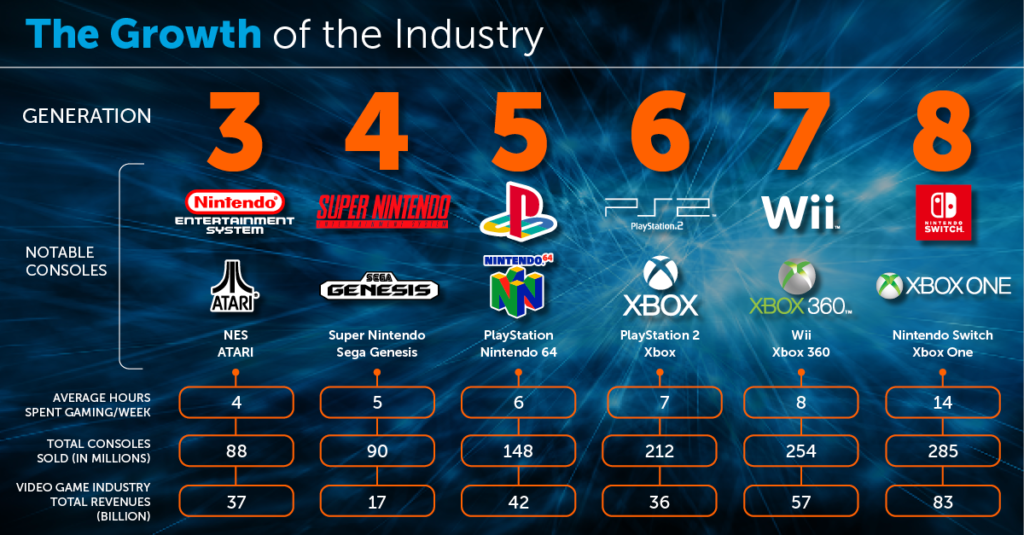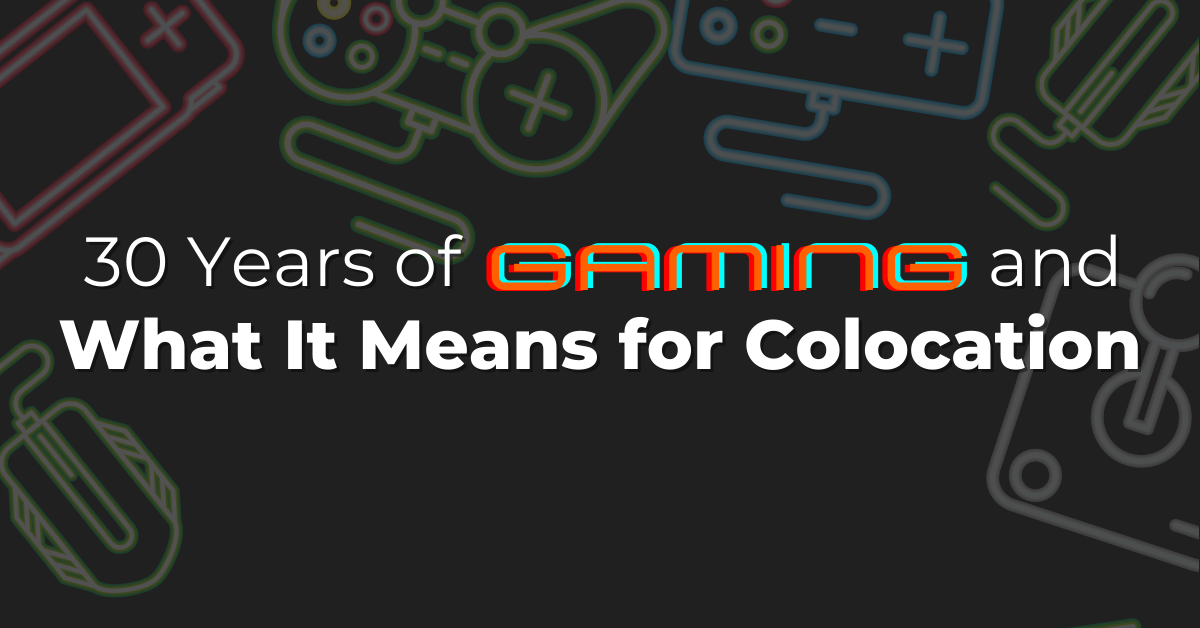When Amazon announced its new game streaming service, it joined other heavyweights Google, Sony, Microsoft, Electronic Arts, and plenty of others launching gaming subscription services. The world of video games is about to enter a new era. What does that mean for networks and interconnection? Sometimes, talking about how we got here is instructive in forecasting where we’re going. Let’s take a look into the past of gaming to help us understand the present and the future. Let’s start in the mid-eighties – in what gamers call the third generation of gaming – to see what lessons we can learn and the future of cloud gaming.

The controllers have changed and the graphics evolved, but the main figures in gaming (Microsoft, Sony, Nintendo) have stayed largely the same. The biggest physical changes have been the game mediums themselves, as buying a game has transformed from purchasing a plastic ROM cartridge to a disc to a file download with no removable component at all. The next generation of gaming will continue this trend, where streamed video games will eliminate the need even for a file download onto a console.

Over the past 30 years, video game hardware has become quickly and exponentially more powerful. The games are bigger, more intricate, and move faster than ever before. A move from no storage at all to a solid state internal storage of 500GB might seem like a huge jump, but the next jump might be even larger. Consoles have a cloud-based component currently, but the next generation of gaming storage will likely be servers. Because gamers are used to fast storage – and therefore shorter waiting times – the performance factor of those servers is paramount.

Not only is gaming becoming more popular, but it’s becoming more lucrative as well. In fact, it’s skyrocketed since the start of the eighth generation in 2012. The current estimate holds annual global gaming revenues at nearly $160 billion, on a trajectory to crack $200 billion annually in the next three years. The United States is the second largest gaming market in the world, valued at over $60 billion. While the PlayStation 5 and Xbox Series X is set to explode the gaming market soon, it’s not just consoles to keep an eye on. Consoles now consist of just the second most popular gaming platform behind mobile gaming on phones and tablets. And although arcade games are no longer a cash cow, PC gaming earns almost $37 billion annually, and growing almost 5% every year. And that’s saying nothing of virtual reality, the gaming world’s rising star. The gaming pie is large and only set to grow larger.
Putting It All Together For Cloud Gaming
So, what does it all mean? What does the future hold? What can we know for sure? For now, we know there will be no more discs, and eventually no more downloads. We know the expectations for responsiveness and resolution will be skyhigh. We also know that the market – and the financial stakes that come with it – will be gigantic. When we look back at how the industry has developed we can project its trajectory, and the next step requires colocation in an edge data center with low latency access to the cloud. The clues are all there.
That’s what we know, but the specifics are still hazy in the crystal ball. Although we can peek around the corner, the long-term future of the gaming industry is largely undetermined because it lies in the collaborative hands of game distributors, network providers, and their edge data centers. If you are a network provider or in the gaming industry, you can create the future by voting with your selection of data center providers.
What’s Next?
We are about to enter the early days of cloud gaming, a phenomenon that will lean heavily on 5G and edge computing. It’s not just about the number of gamers or the availability of new games – it’s about the importance of latency and high-performance data center connectivity. Game developers need to leverage the cloud using proximal access to cloud server farms. Just like the days of Atari, old fashioned siloed coding is on its way out – with Cloud DevOps on its way in. Game developers now rely on data centers just the way game distributors now rely on network providers. Only a multi-faceted, collective approach will catalyze the true potential of gaming’s next generation. We’ve looked at the amazing path gaming has taken to get here. The path forward will rely on high-performance networks.
Is your business ready?
To learn more about how interconnected edge data centers hold the key to the future success of cloud gaming, check out our latest ebook: The Cloud Gamer’s Edge.


